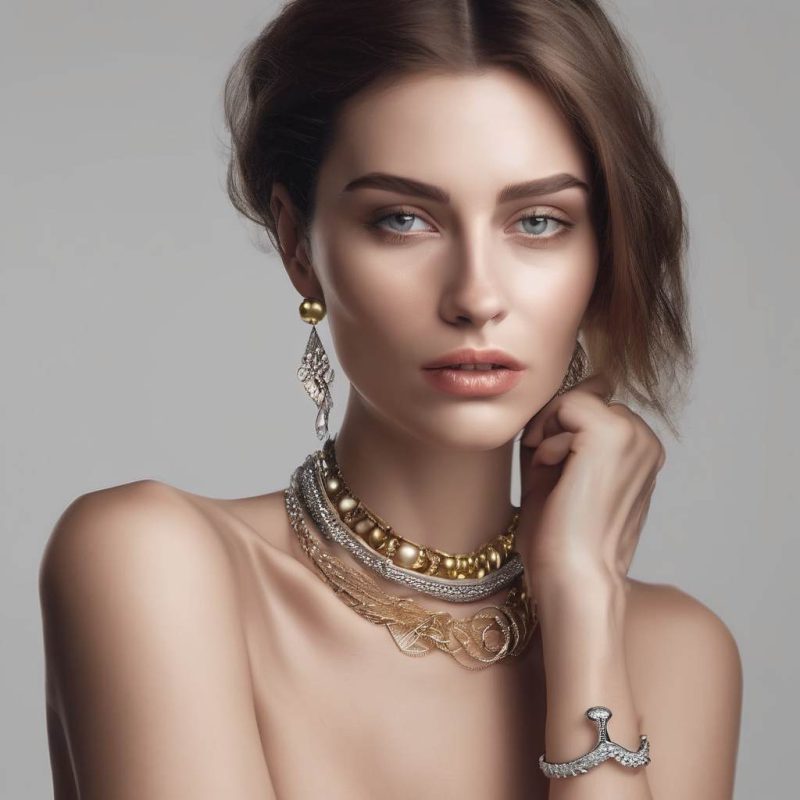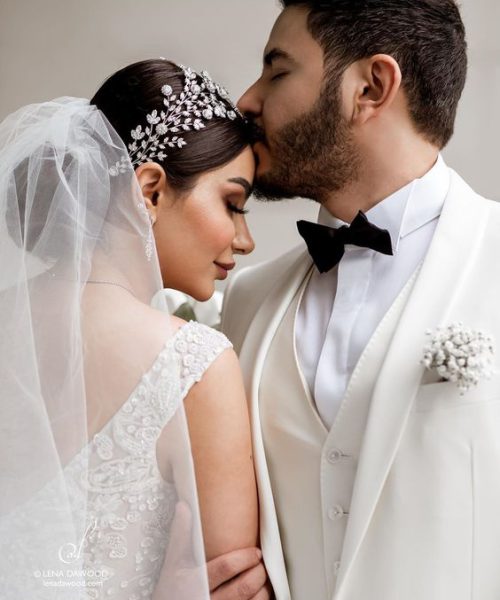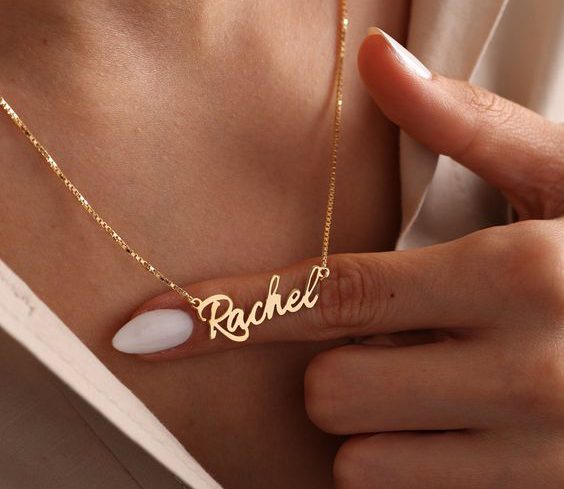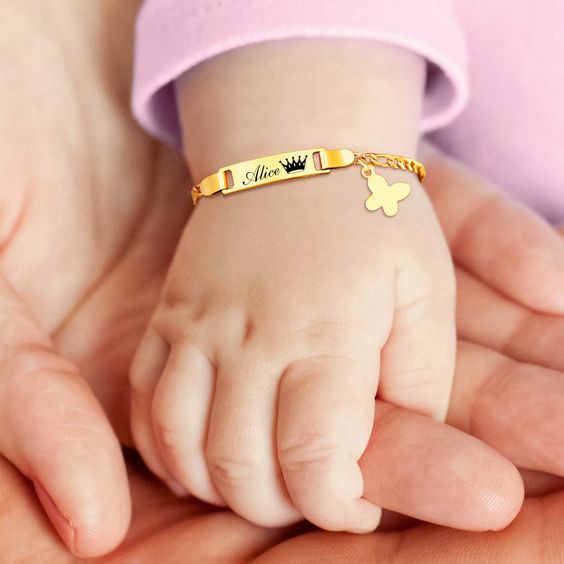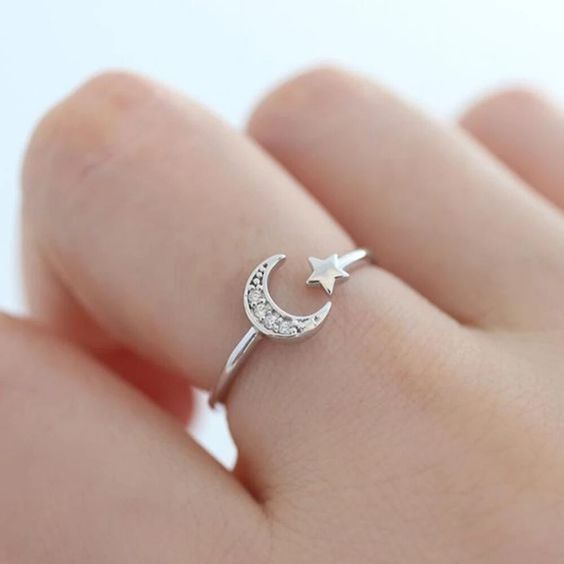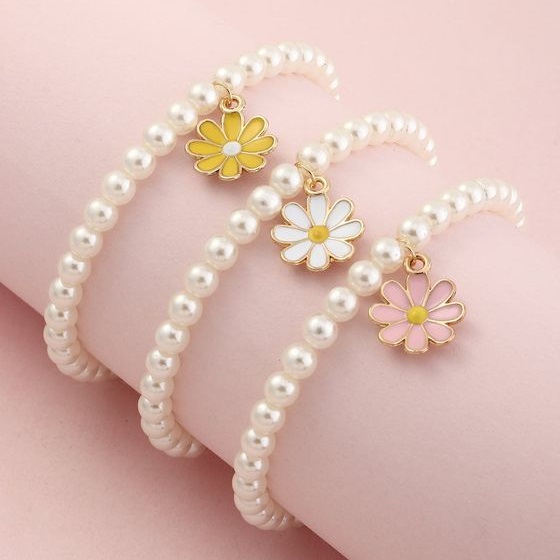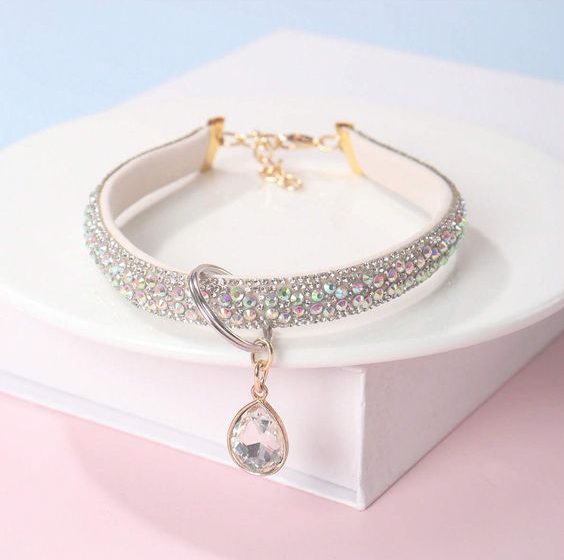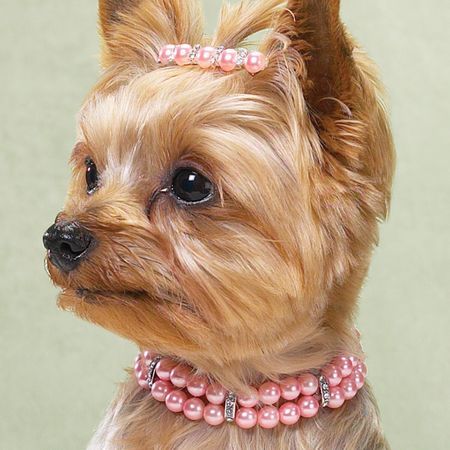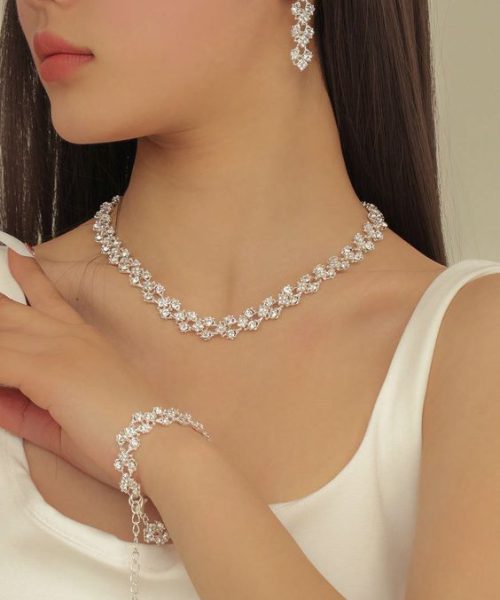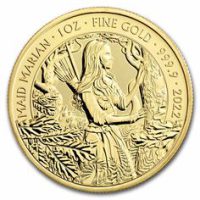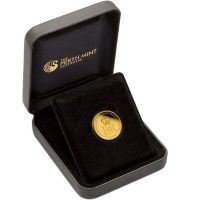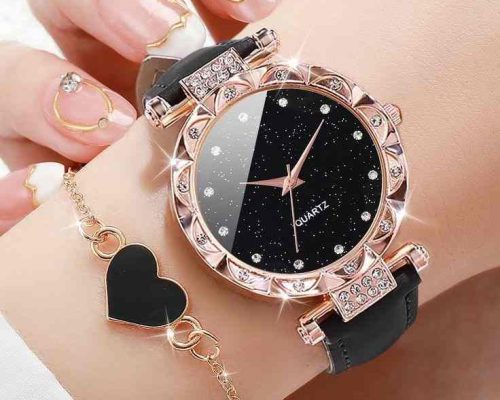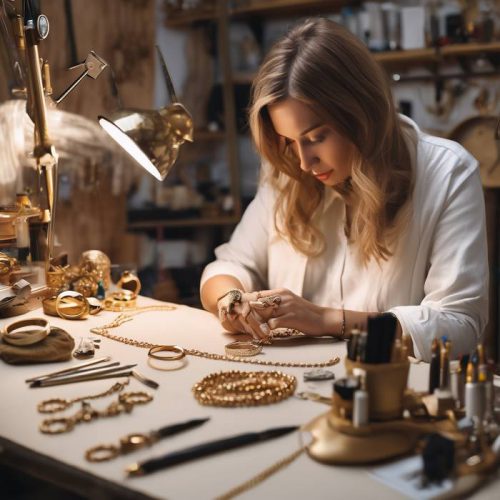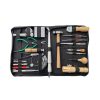Page table of contents
Introduction
Jewelry has been an integral part of human culture for centuries. From ancient civilizations to the modern era, jewelry has served as a symbol of status, wealth, and personal expression. The design of jewelry has evolved over time, influenced by various historical contexts and cultural movements. In this article, we will take a journey through different eras of jewelry design, exploring how historical events and societal changes have shaped the aesthetics and styles of jewelry.
Ancient Times: The Birth of Jewelry
The history of jewelry design can be traced back to ancient times, where it held significant cultural and religious importance. In ancient Egypt, for example, jewelry was not only a symbol of wealth but also had a spiritual significance. The Egyptians believed that jewelry had protective and magical properties, and it was often buried with the deceased to accompany them in the afterlife.
During the ancient Greek and Roman civilizations, jewelry design became more intricate and ornate. Gold and gemstones were highly valued, and jewelry was crafted with meticulous attention to detail. The designs often featured mythological motifs and symbols, reflecting the cultural beliefs and stories of the time.
Medieval and Renaissance: Symbolism and Opulence
The medieval and Renaissance periods were characterized by a resurgence of artistic expression and a focus on symbolism in jewelry design. The Catholic Church played a significant role in shaping the aesthetics of jewelry during this time, with religious symbols and motifs being prevalent.
In the Renaissance era, jewelry became a symbol of power and opulence among the nobility and aristocracy. Intricate designs featuring precious gemstones and intricate metalwork were favored, showcasing the wealth and status of the wearer.
Victorian Era: Sentimentality and Symbolism
The Victorian era marked a shift in jewelry design, with sentimentality and symbolism taking center stage. Queen Victoria’s love for jewelry influenced the trends of the time, with sentimental pieces such as lockets and mourning jewelry gaining popularity.
The use of gemstones and precious metals continued, but the designs became more delicate and intricate. Floral motifs, cameos, and engraved messages were commonly seen in Victorian jewelry, reflecting the romantic and sentimental ideals of the era.
Art Nouveau: Nature-Inspired Designs
In the late 19th and early 20th centuries, the Art Nouveau movement emerged, bringing a fresh and innovative approach to jewelry design. Inspired by nature, Art Nouveau jewelry featured flowing lines, organic shapes, and intricate details.
Artists such as René Lalique and Alphonse Mucha created stunning pieces that showcased the beauty of natural forms. The use of unconventional materials, such as enamel and glass, added a unique touch to Art Nouveau jewelry.
Art Deco: Glamour and Geometry
The Art Deco movement, which emerged in the 1920s, brought a sense of glamour and sophistication to jewelry design. Characterized by bold geometric shapes, clean lines, and a focus on symmetry, Art Deco jewelry reflected the modernity and optimism of the time.
Diamonds and other precious gemstones were favored, often set in platinum or white gold. The designs were sleek and streamlined, with influences from Cubism and the machine age.
Modern Era: Individuality and Innovation
In the modern era, jewelry design has become more diverse and individualistic. With advancements in technology and the rise of contemporary art movements, designers have embraced new materials and techniques to create unique and innovative pieces.
Contemporary jewelry design is characterized by experimentation and a focus on self-expression. Designers like Elsa Peretti, David Yurman, and Yayoi Kusama have pushed the boundaries of traditional jewelry design, incorporating unconventional materials and exploring new forms.
Conclusion
The history of jewelry design is a testament to the ever-evolving nature of human creativity and expression. From ancient times to the modern era, jewelry has served as a reflection of cultural values, societal changes, and individual tastes. By exploring the different eras of jewelry design, we gain a deeper understanding of how historical context has influenced the aesthetics and styles of jewelry. Whether it’s the symbolism of ancient civilizations, the opulence of the Renaissance, or the innovation of contemporary design, jewelry continues to captivate and inspire us.
Frequently Asked Questions (FAQ)
- What are some famous examples of ancient Egyptian jewelry?
- Some famous examples of ancient Egyptian jewelry include the burial mask of Tutankhamun, the jewelry of Queen Cleopatra, and the amulets worn for protection.
- How did the Catholic Church influence jewelry design during the medieval and Renaissance periods?
- The Catholic Church played a significant role in shaping jewelry design during this time, with religious symbols and motifs being prevalent. Crosses, crucifixes, and depictions of saints were commonly incorporated into jewelry designs.
- What is the significance of mourning jewelry in theVictorian era?
- Mourning jewelry gained popularity during the Victorian era as a way to commemorate and remember loved ones who had passed away. These pieces often featured black materials, such as jet or onyx, and were adorned with symbols of mourning, such as weeping willows or urns.
- Who were some influential artists in the Art Nouveau movement?
- René Lalique and Alphonse Mucha were two influential artists in the Art Nouveau movement. Lalique was known for his exquisite glasswork and jewelry designs, while Mucha was renowned for his decorative art and illustrations.
- How has technology influenced contemporary jewelry design?
- Technology has opened up new possibilities for contemporary jewelry design. 3D printing, for example, allows designers to create intricate and complex pieces with ease. Additionally, advancements in gemstone cutting and setting techniques have expanded the range of design options available to jewelry makers.
References
- Ancient Egyptian Jewelry
- Medieval and Renaissance Jewelry
- Victorian Jewelry
- Art Nouveau Jewelry
- Art Deco Jewelry
- Contemporary Jewelry Design
In conclusion, the history of jewelry design is a fascinating journey through time, reflecting the cultural, social, and artistic influences of each era. From the ancient civilizations of Egypt and Greece to the opulence of the Renaissance and the innovation of contemporary design, jewelry has always been a symbol of personal expression and cultural significance. By understanding the historical context and the evolution of jewelry design, we can appreciate the craftsmanship and artistry behind these timeless pieces. So, the next time you put on a piece of jewelry, take a moment to appreciate the rich history and the stories it carries with it.












